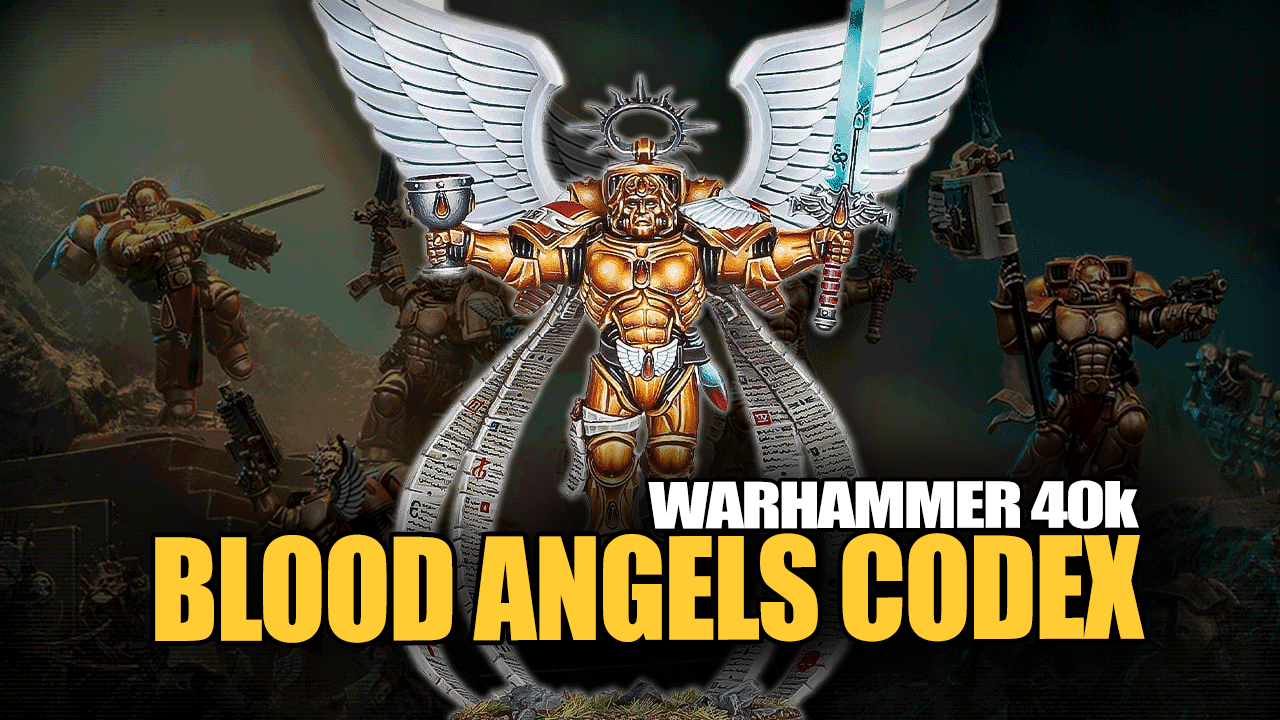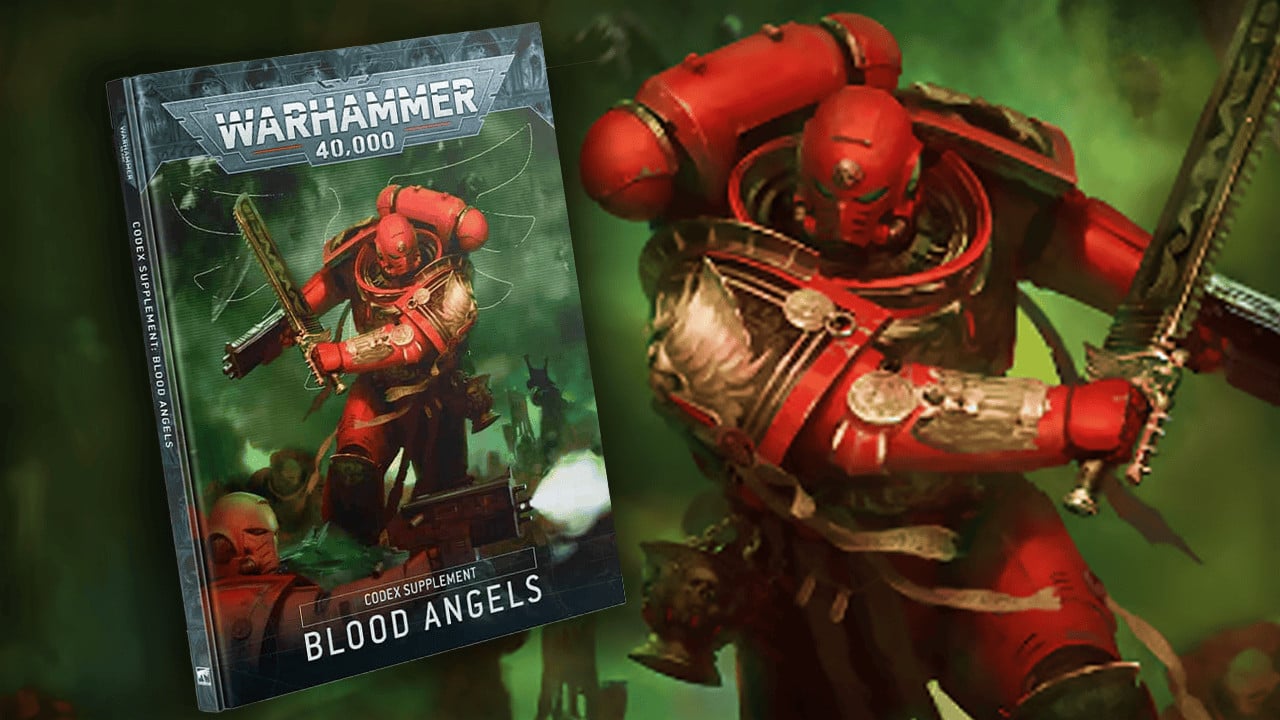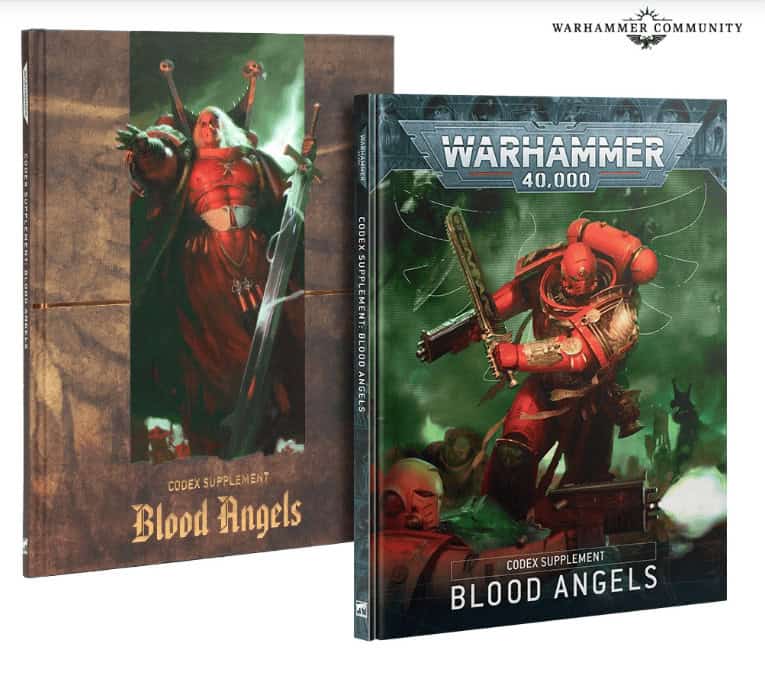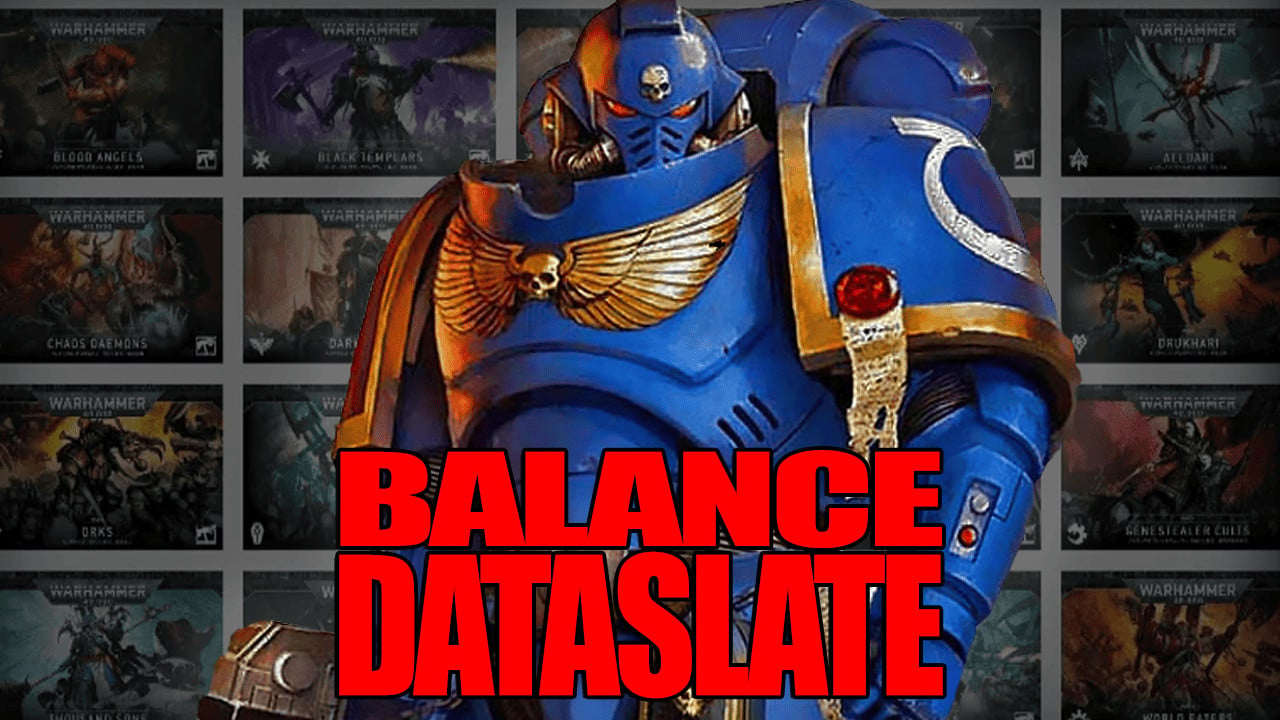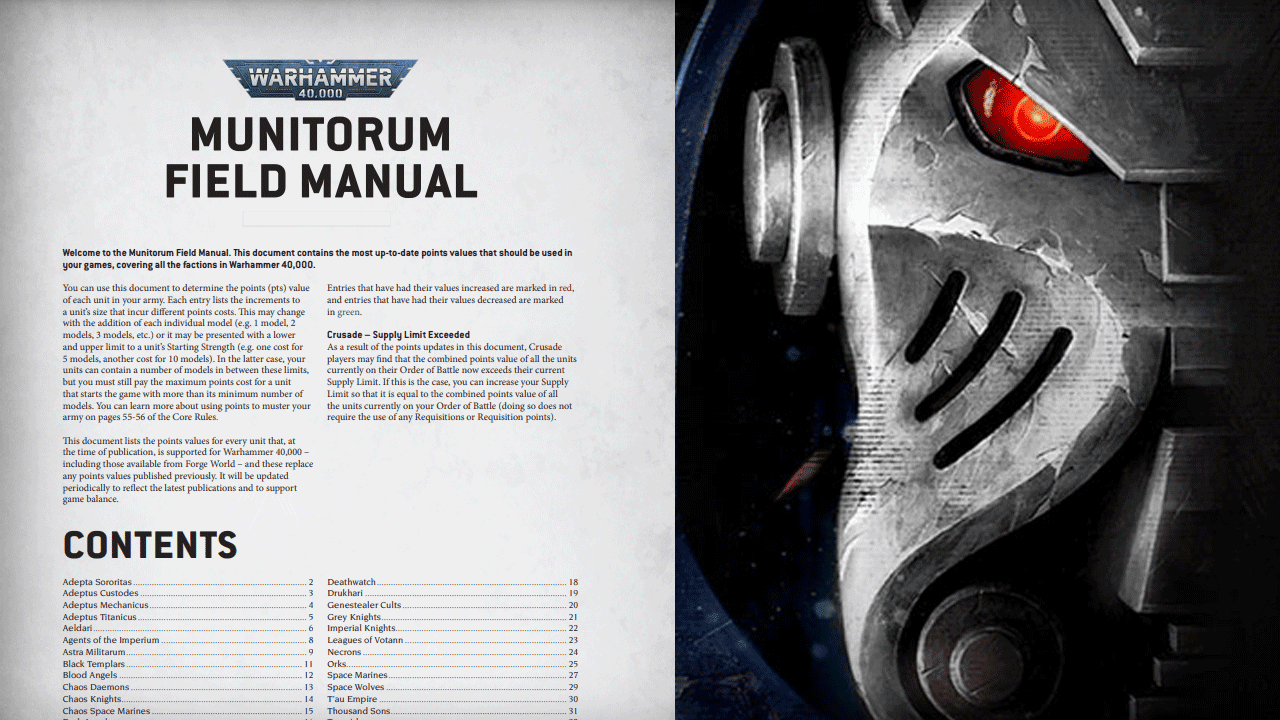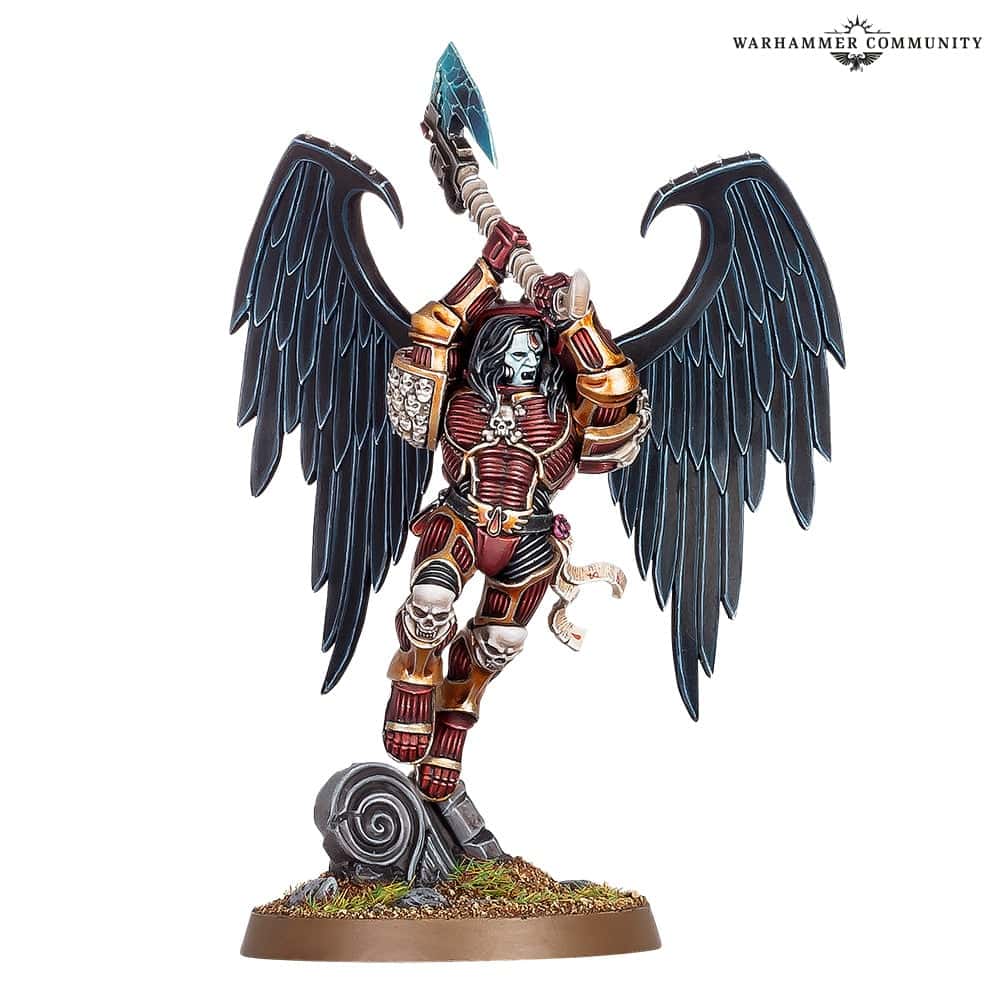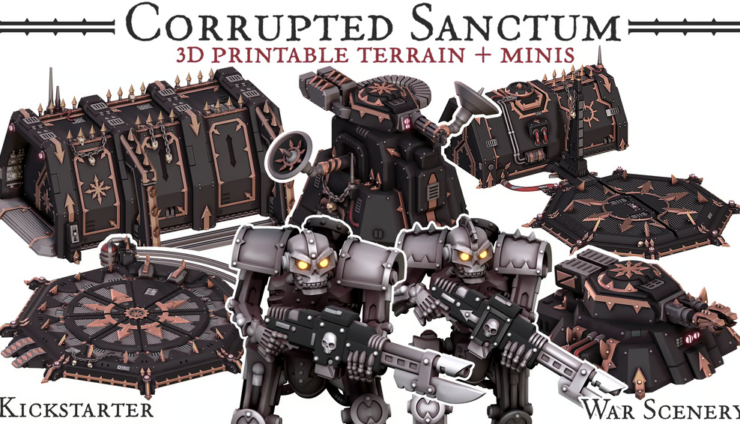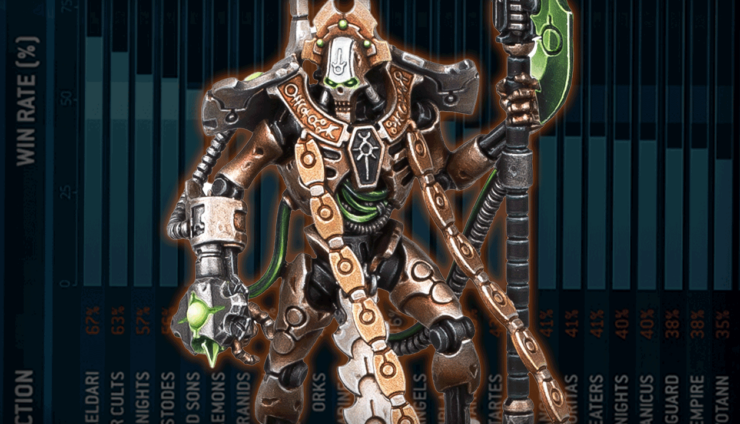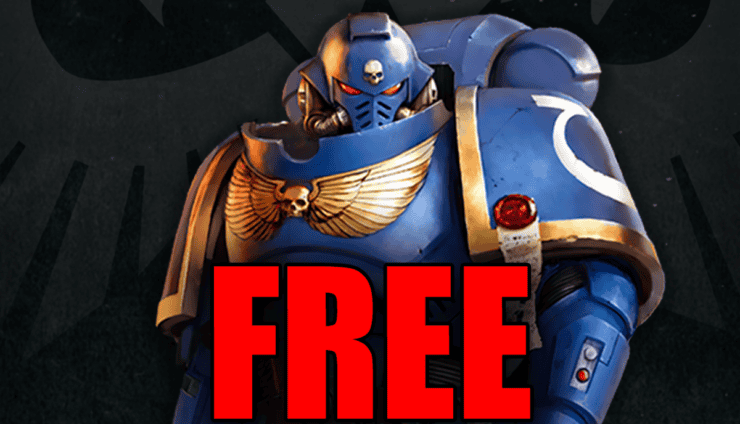Unleash the angels with our ultimate guide to the new Blood Angels codex in 10th Edition Warhammer 40k: how to play, rules, tips, strategies, and review!
Updated March 10th, 2025, by Rob Baer with new information and links to relevant content.
The Blood Angels aren’t just another Space Marine chapter—they’re a glorious mix of noble warriors, raging berserkers, and some of the flashiest jump pack action in Warhammer 40k. If you’re looking to command an army that hits hard, moves fast, and throws down in style, you’ve come to the right place.
This guide breaks down everything you need to know about playing Blood Angels in 10th Edition. From the latest codex updates to core strategies, unit breakdowns, and key rules, it’s all covered here. Whether you’re looking to sharpen your tactics, get the most out of the iconic Death Company, or figure out how to counter the biggest threats in the current meta, this is your battlefield manual. Let’s get into it!
Blood Angels Codex Rules Review & Army Guide
You know, there’s nothing quite like watching a bunch of noble, rage-fueled space vampires fly across the battlefield, slicing and dicing with the precision of a surgeon who’s had one too many cups of caffeine.
Welcome to the world of the Blood Angels in Warhammer 40k—a chapter defined by equal parts grace and fury and a whole lot of cool red armor.
What’s New in the Blood Angels Codex
For those keeping an eye on the 41st millennium, the new Blood Angels Codex for 10th Edition brings a host of changes that would make even the Black Rage pale in comparison. In this latest installment, our favorite vampire space marines have been given a fresh batch of detachment rules, character updates, and a few painful farewells to beloved units.
Gone are the days of fielding Librarian Dreadnoughts like they were going out of style (spoiler: they did), but the new Death Company and Sanguinary Guard detachments are ready to tear into your opponents with unrelenting fury.
From tweaks to unit datasheets to refined abilities that push the Blood Angels further into their aggressive melee identity, this codex has everything a 40k fan could want. Want to know why Mephiston is now even more terrifying than ever? Or how Commander Dante can still give your army that strategic edge? It’s all here in the 10th Edition update, where the Red Thirst has never been more deadly.
Overview of Blood Angels Lore and Narrative
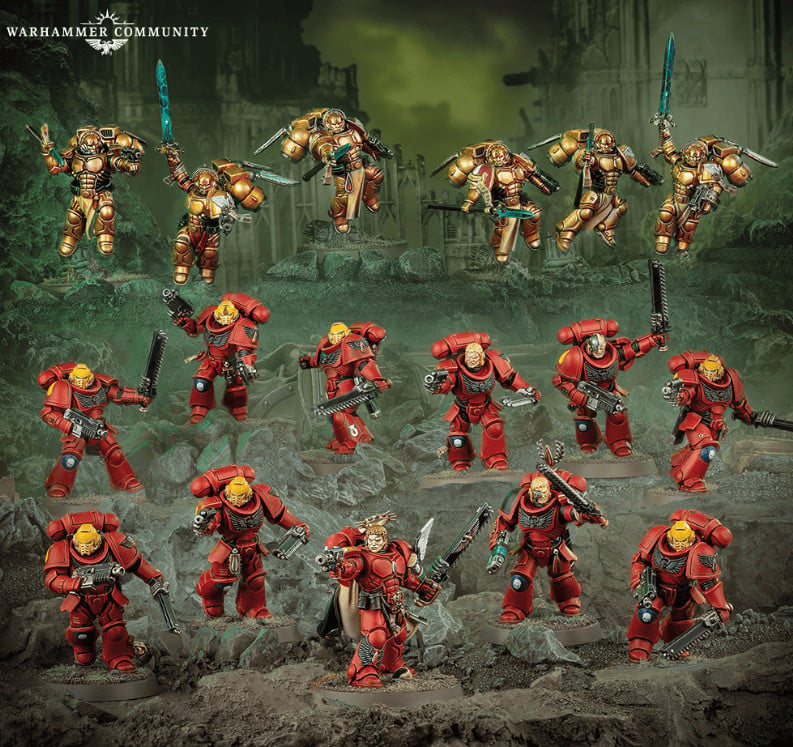
Their homeworld of Baal lies in the grim darkness of the far future, scarred by radiation and home to bloodthirsty mutants. It’s a fitting environment for a chapter that exists on the razor’s edge of self-destruction. As they battle their foes, the Blood Angels also battle their inner demons, haunted by visions of their Primarch’s heroic last stand against Horus during the Horus Heresy.
Whether you’re here for the tragic lore or the brutal gameplay, the Blood Angels represent a fascinating dichotomy of beauty and savagery.
Are Blood Angels Loyalists?
Yes… mostly. The Blood Angels are 100% loyal to the Imperium and Big Daddy Emperor, but they’ve got a little “anger management” issue called the Red Thirst and Black Rage. Sometimes, their warriors get a bit too caught up in the whole “righteous fury” thing and start seeing visions of their Primarch’s last stand, which results in an uncontrollable urge to rip and tear through anything in their way. That being said, they’re still loyalists—just with a slight tendency to go full berserker mode when the mood strikes.
Why the Blood Angels Codex is Important in Warhammer 40k
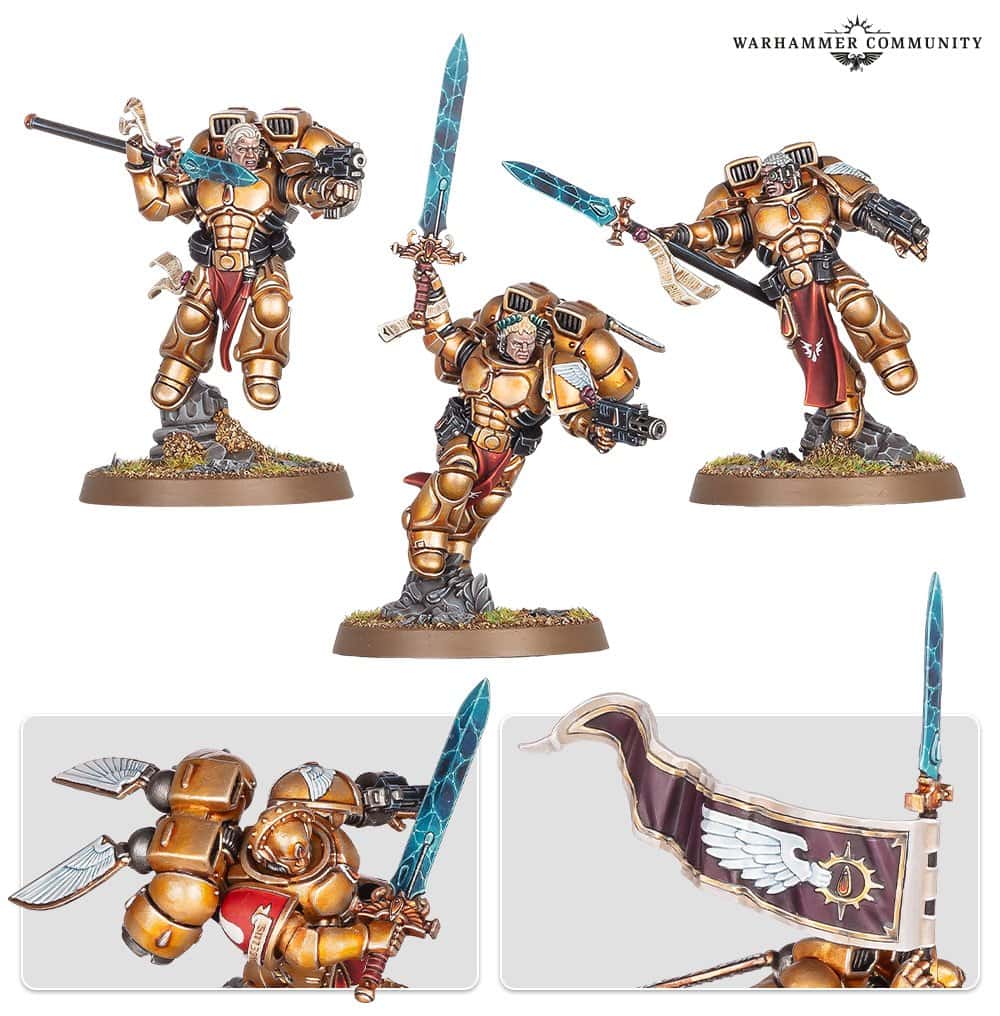
Their new codex isn’t just another rules update; it’s a reflection of their shifting place within the meta. With options for highly mobile, hard-hitting units and game-changing stratagems, this codex is vital for players looking to maximize the chapter’s strengths in melee combat while navigating the delicate balance between aggression and strategy.
How to Play Blood Angels in Warhammer 40k
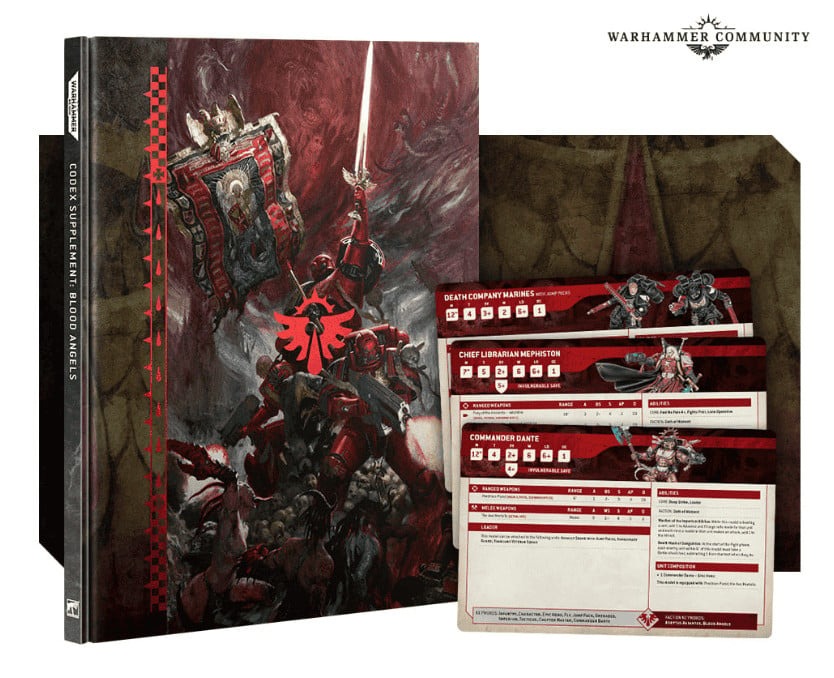
Blood Angels are all about one thing: getting up close and personal. If you enjoy smashing through the enemy with blades, claws, and the occasional giant fist, this is the army for you. The hallmark of Blood Angels gameplay is their fast, hard-hitting assaults, combining speed with devastating melee power.
The Red Thirst ability, which gives them a bonus on charges, perfectly encapsulates the Blood Angels’ aggressive nature. It encourages players to throw their units into the fray at every opportunity, turning ordinary Space Marines into absolute monsters in close combat.
Of course, this playstyle has its risks. If your assault fails, you’re left exposed and potentially vulnerable. Blood Angels players must balance their thirst for blood with the tactical awareness to time their charges correctly.
Key Strengths and Weaknesses
Strengths:
- Brutal in melee: Few armies can match the Blood Angels in hand-to-hand combat, especially once they’ve charged into battle with their Red Thirst-fueled attacks.
- Speed: Units like Jump Pack-equipped Sanguinary Guard and Death Company Marines give Blood Angels incredible mobility, letting them close the gap with the enemy in no time.
- Resilience: With characters like Mephiston or Dante leading the charge, Blood Angels can shrug off blows and keep fighting long after other units would have fallen.
Weaknesses:
- Reliance on melee: If a Blood Angels army fails to engage in close combat early, they can struggle against more shooty armies, leaving them vulnerable at range.
- High-risk strategies: The aggressive playstyle often means committing your best units into combat, which can leave you open to counter-attacks if things go wrong.
Synergies Between Units and Detachments
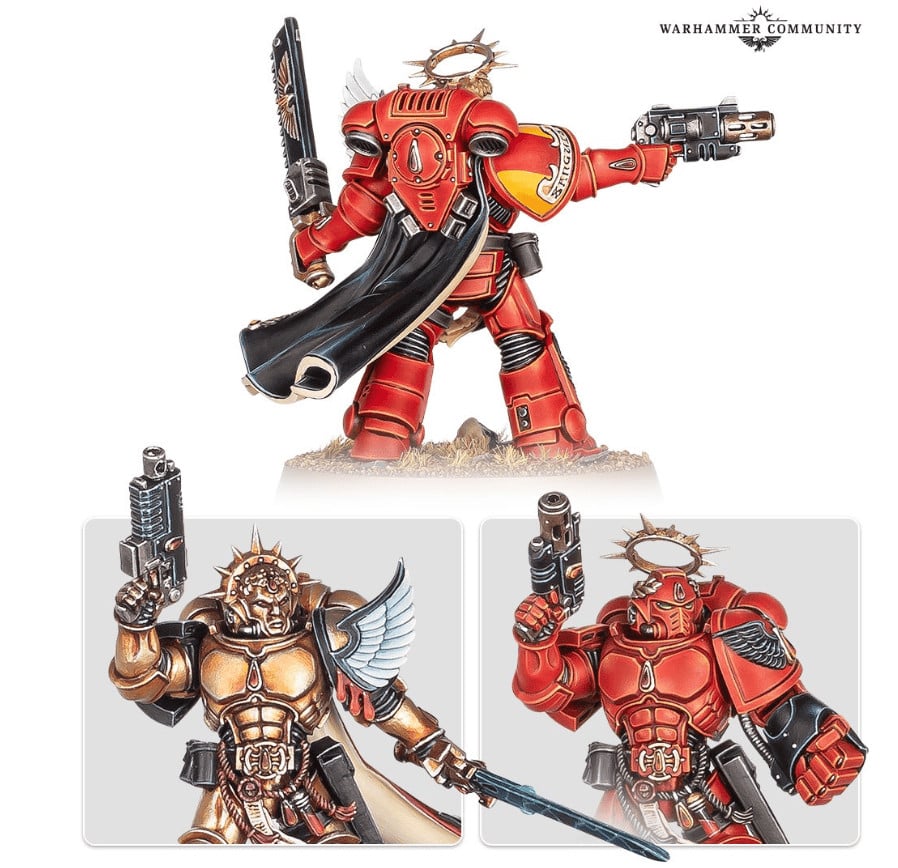
For instance, placing Dante alongside a unit of Sanguinary Guard can give them additional attacks and boosts to their survivability. On the other hand, the Death Company becomes an even bigger threat with the right Chaplain to keep them from succumbing entirely to the Black Rage.
Choosing the right detachment can further enhance these synergies, allowing players to focus on a specific aspect of the Blood Angels’ playstyle, whether it’s maximizing raw power or refining their hit-and-run tactics.
Adapting to the New Rules for 10th Edition
In 10th Edition, Blood Angels players have to think smarter. While their melee-focused playstyle is still at the forefront, the new detachment rules allow for greater flexibility. Now, instead of being pigeonholed into one strategy, players can choose between specialized detachments that offer unique bonuses to fit different playstyles.
For example, the Sanguinary Guard detachment gives bonuses to high-mobility, elite units that can strike with precision, while the Death Company detachment leans into the more unhinged side of the Blood Angels, rewarding all-out aggression and relentless combat. This new flexibility allows for more creativity in list-building and adapting to different opponents.
How to Play: Blood Angels Stratagems and When to Use Them
Blood Angels players have access to some of the most aggressive stratagems in Warhammer 40k. Knowing when to trigger these abilities can make or break a game.
For instance, using “Forlorn Fury” allows Death Company units to move before the game begins, positioning them for an early, devastating charge. Similarly, “Upon Wings of Fire” lets your Jump Pack units redeploy mid-game, giving you the tactical flexibility to reposition key units when you need them most.
Timing is key with Blood Angels stratagems. Use them too early, and you might burn out before the battle’s done. Too late, and you may miss your window to break the enemy’s back in one fell swoop.
Blood Angels Codex Rules Breakdown
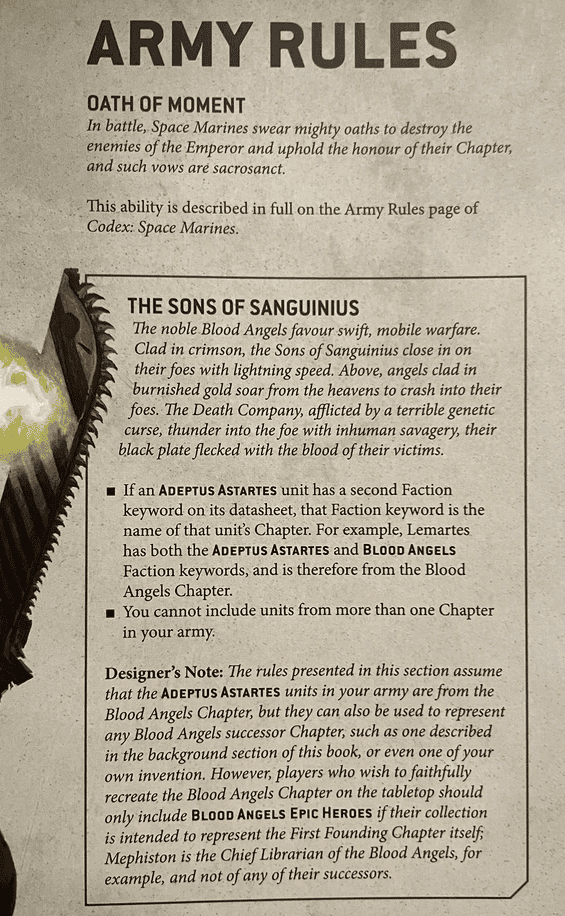
Let’s break it down, piece by piece, starting with the core rules and faction abilities that define the Blood Angels’ playstyle in Warhammer 40k.
Sons of Sanguinius: Key Rule for Blood Angels
Every Blood Angels player knows that the Sons of Sanguinius rule is where the magic (or should we say bloodbath) begins. This rule perfectly encapsulates the chapter’s identity: aggression, speed, and downright ferocity in close combat. The Sons of Sanguinius rule grants Blood Angels units +1 to their wound rolls when they charge, get charged, or heroically intervene. In other words, Blood Angels are born to strike first, strike hard, and strike true.
Imagine your army zooming across the battlefield like avenging angels, landing precise hits that will leave your enemies reeling. It’s not just about damage – it’s about doing maximum damage when it counts. This rule means you don’t have to second-guess a charge; once your units are in, they hit with the strength of Sanguinius himself.
How to Play: Oath of Moment and Its Impact on Blood Angels
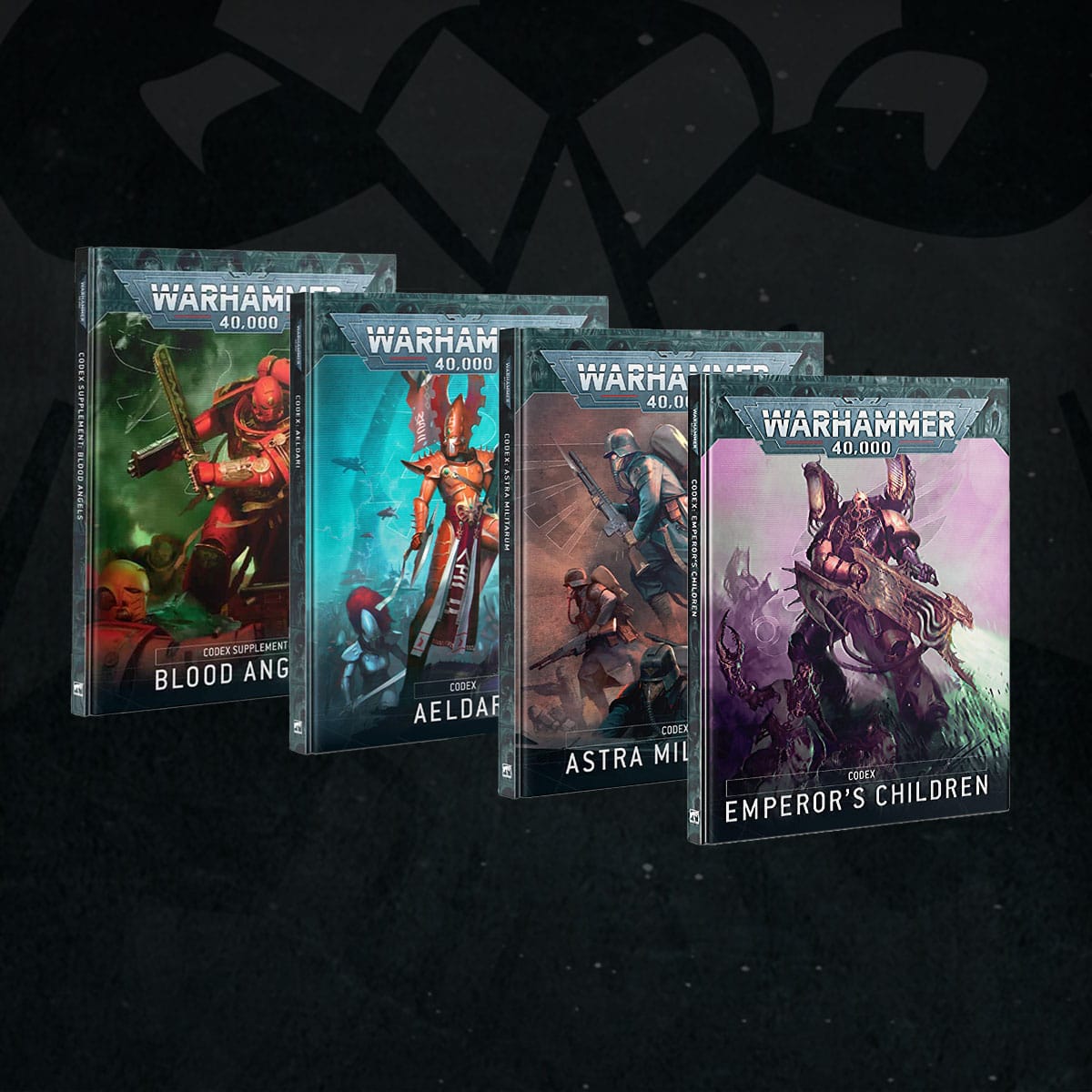
For Blood Angels, this rule is a game-changer. You already excel in close combat, but Oath of Moment lets you focus all your might on one crucial enemy, ensuring that when the Blood Angels get their hands dirty, they get the job done right. Coupled with the Sons of Sanguinius rule, it’s the perfect formula for obliterating key threats before they have a chance to respond.
Are Blood Angels Good?
Oh, absolutely—if by good you mean “capable of tearing through enemies like a chainsaw through butter.” Blood Angels bring speed, aggression, and some of the best melee units in Warhammer 40k. They’re a dream for anyone who likes their Space Marines with extra style and a whole lot of carnage.
But if you’re asking whether they’re “good” in the meta, that depends on the edition, codex updates, and how well you play them. Right now? Yeah, they slap. Hard.
Blood Angels Detachments in 10th Edition
Now, where things really get spicy are the detachments. The 10th Edition Codex offers a variety of Blood Angels detachments, each with its own flavor of warfare. Whether you want to lean into the fury of the Black Rage or opt for the calculated strikes of the Sanguinary Guard, there’s something here for every Blood Angels player.
Death Company Detachment – Harnessing the Black Rage
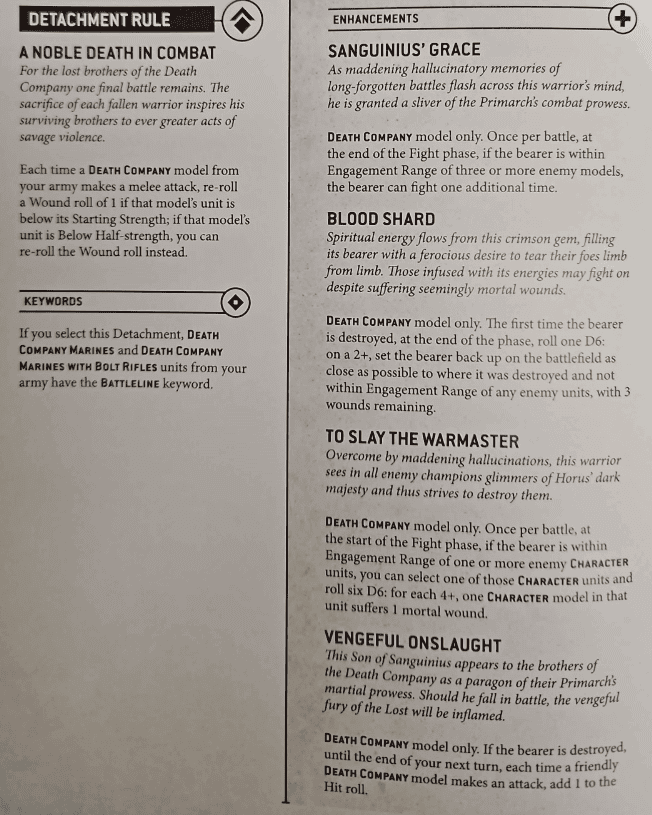
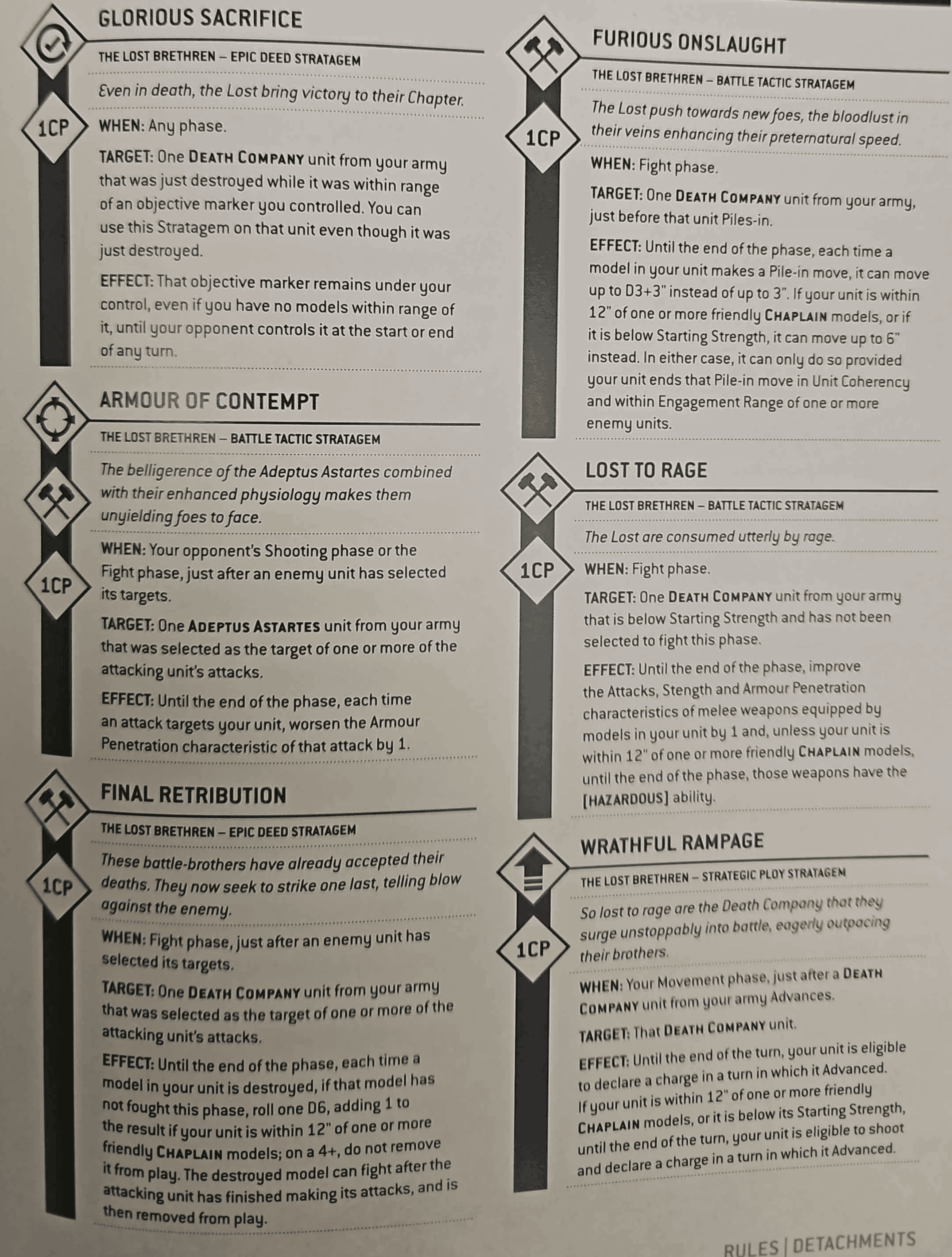
Sanguinary Guard Detachment – Precision and Power
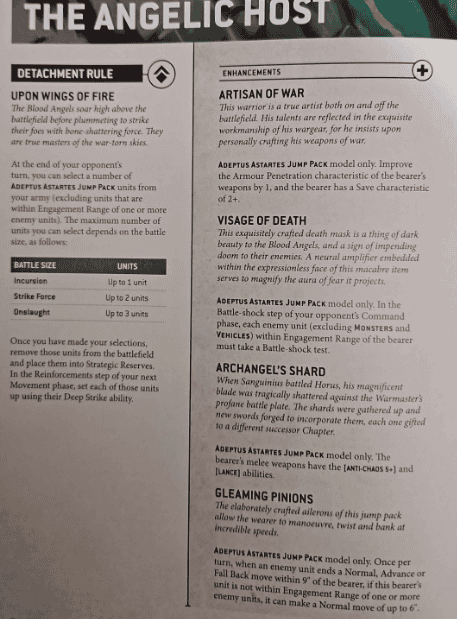
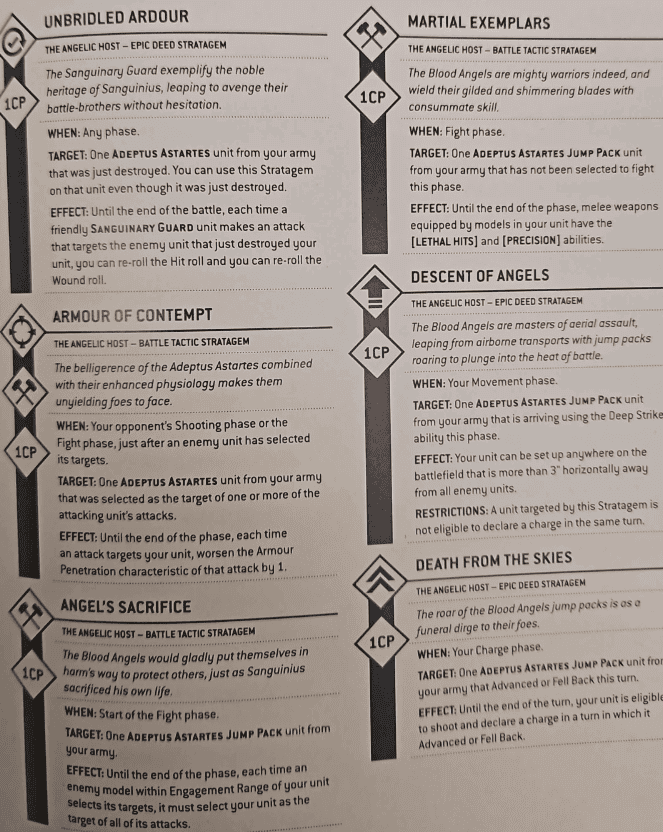
Liberator Assault Group – Mobility and Shock Tactics
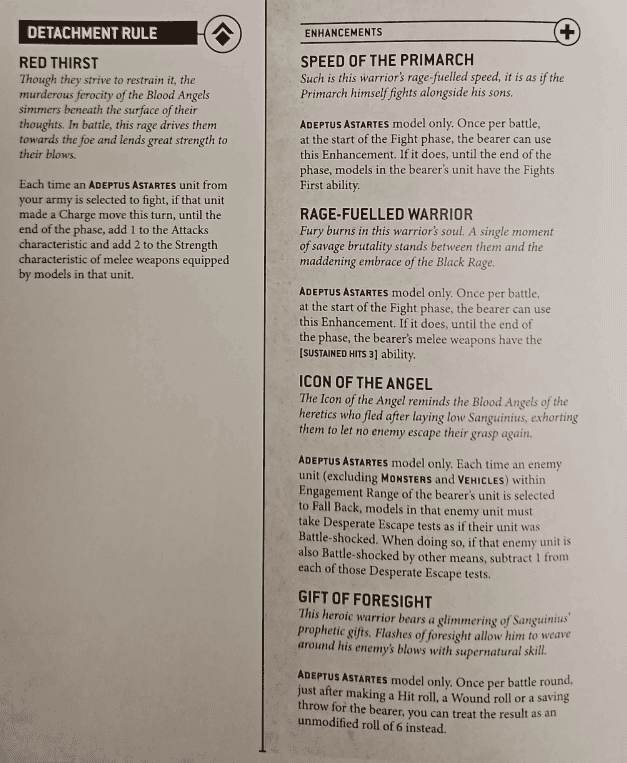
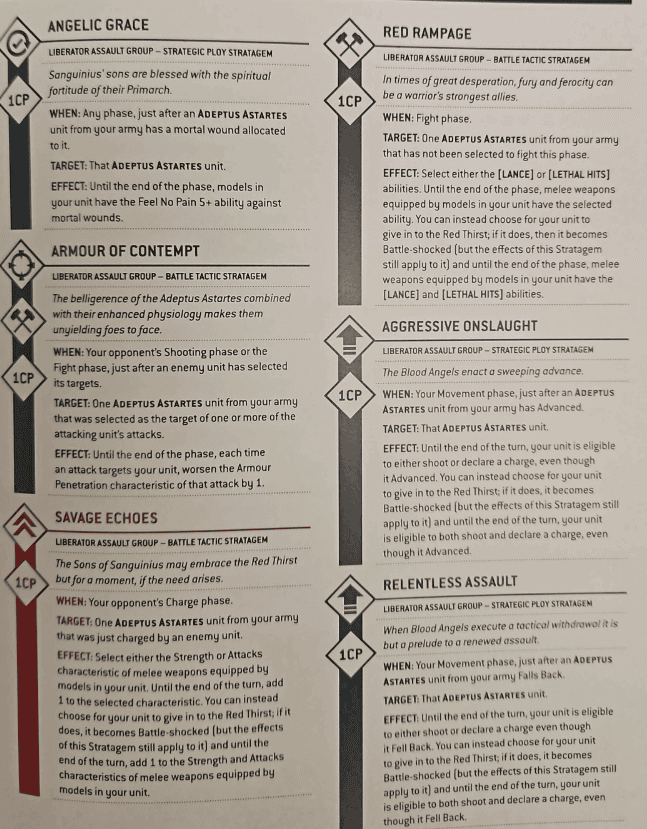
Key Units in the Blood Angels Codex
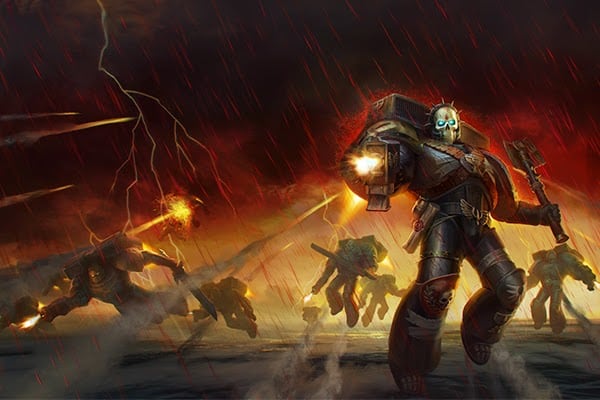
How to Play Blood Angles: Character Overviews: How They’ve Changed in 10th Edition
The heroes (and anti-heroes) of the Blood Angels are what set them apart. With each iteration of the codex, these characters become even more lethal, and 10th Edition is no different. Here’s how the heavyweights of the Blood Angels roster have been updated.
Mephiston: The Chief Librarian’s New Powers

He can now prevent enemies from falling back, keeping them locked in combat – perfect for a Blood Angels army that thrives on melee combat. Add in a 4+ Feel No Pain and a 5+ invulnerable save, and you’ve got a character that’s as tough as he is deadly.
But here’s the kicker – Mephiston can no longer lead units. Some may lament the loss of his leadership role, but let’s be real: when you’re a walking psychic blender, who needs an entourage?
Commander Dante: The Blood Angels Chapter Master
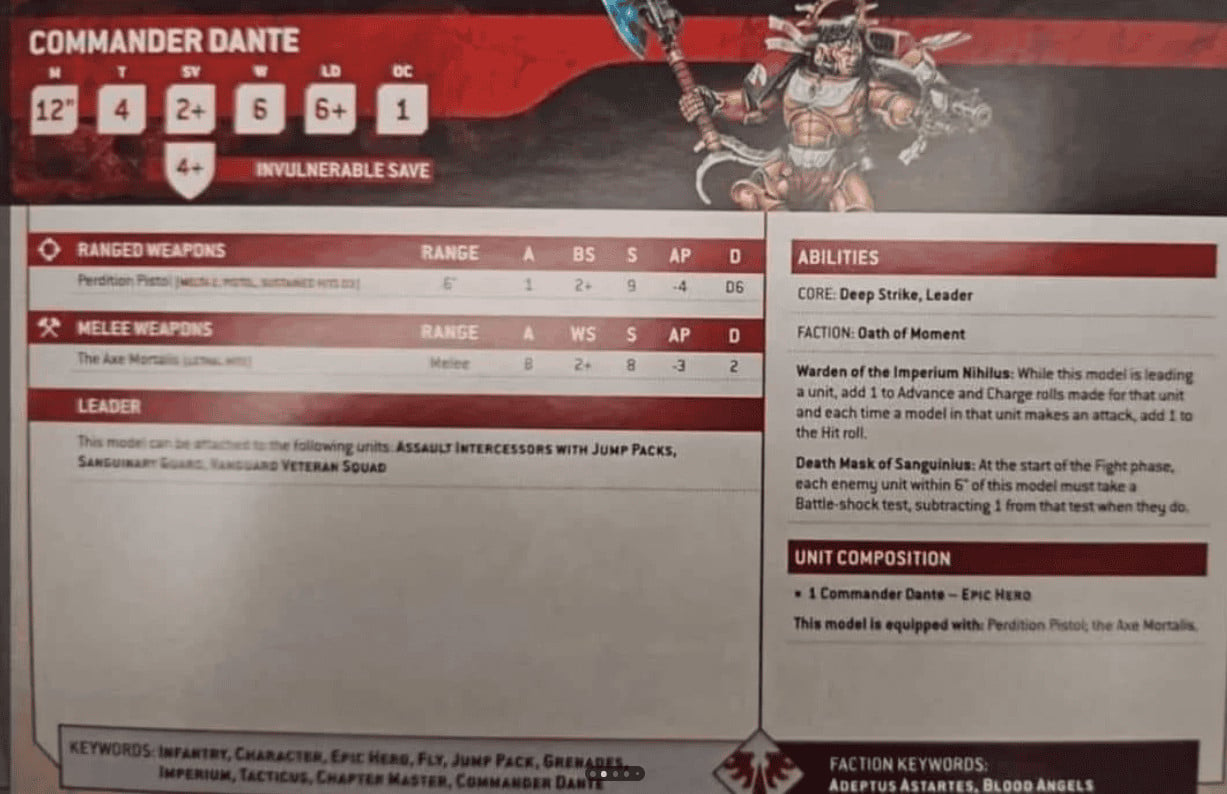
One of Dante’s new tricks is his ability to give +1 to advance and charge rolls to his unit. This little bonus might not seem like much, but it’s the difference between hitting your opponent like a freight train or getting stuck out in the open, waiting to be shot to pieces.
Astorath & Lemartes: Leading the Death Company
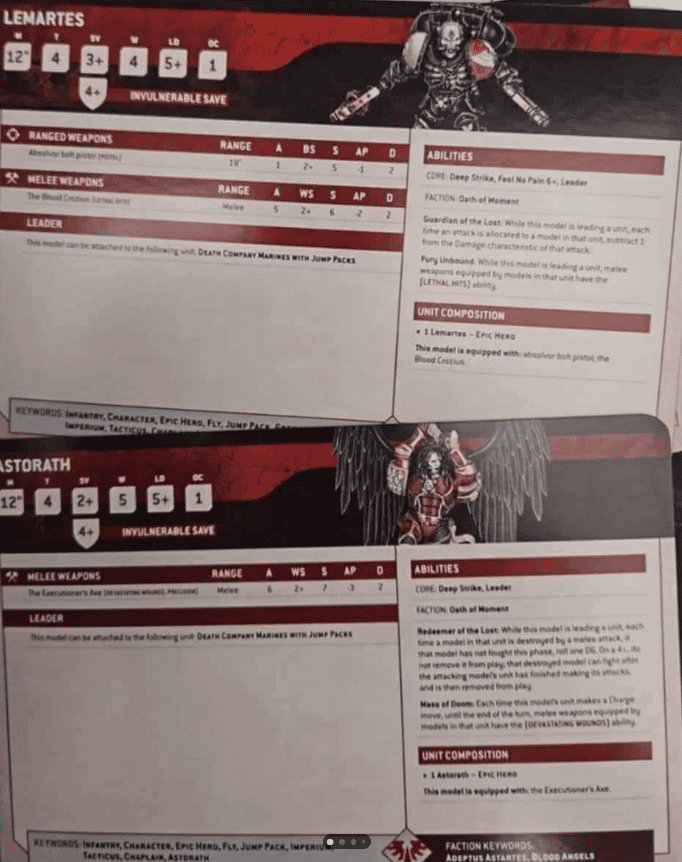
Lemartes, on the other hand, hasn’t changed much – but that’s because he was already awesome. He still buffs Death Company Marines, letting them shrug off damage and hit harder, while his personal damage output remains solid.
Blood Angels Units in Focus
Now, let’s talk about the regular units. Blood Angels aren’t just about the named characters – their core units are just as important in executing the brutal close-combat strategies the chapter is known for.
Death Company Marines
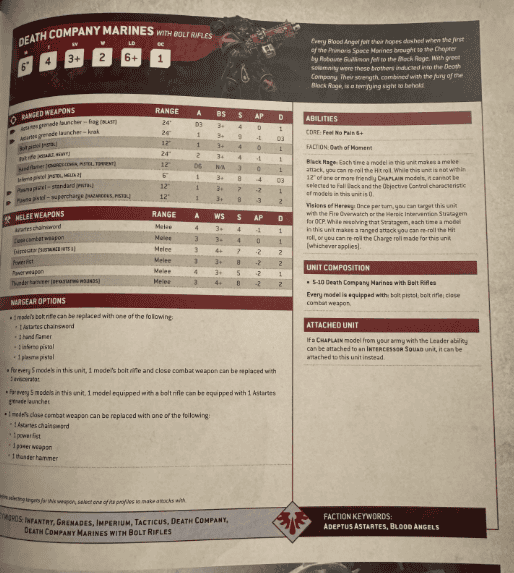
The downside? They’re still as fragile as ever. Their fury might get them into battle, but once there, they’ll be targeted hard. Still, for the carnage they can cause, it’s worth the sacrifice.
Sanguinary Guard

Their weapons – the iconic blades and spears – still carve through infantry like butter, but they’re also capable of bringing down tougher targets, thanks to their updated stats. Plus, with Dante or another character leading them, they can become near-unstoppable.
Baal Predator and Other Vehicles

Other vehicles like the Stormraven Gunship and Drop Pods also play crucial roles, but the Baal Predator’s versatility keeps it in the spotlight.
Death Company Dreadnought
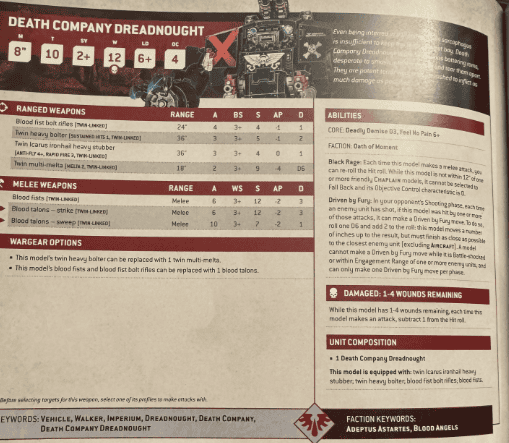
Just like the Death Company Marines, the Death Company Dreadnought is all about going out in a blaze of glory – and with the right support, it can take out entire squads before it falls.
Blood Angels Tactics & Strategies for 10th Edition
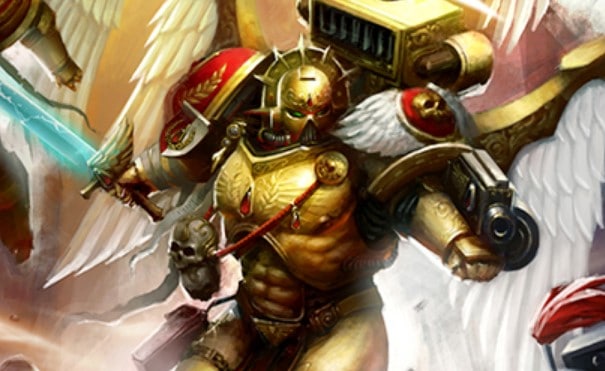
How to Build an Effective Blood Angels Army
Building a Blood Angels army is like crafting the perfect storm—one part aggressive melee, one part tactical positioning, and a dash of fiery temper. You want units that can move fast, hit like a sledgehammer, and, most importantly, survive long enough to do serious damage. The trick is balancing that legendary close-combat prowess with the mobility and durability needed to withstand counterattacks.
When assembling your army, you need to focus on synergy. Combining hard-hitting Death Company units with resilient Sanguinary Guard and a few choice characters like Dante or Mephiston will give you both staying power and versatility. Don’t forget some ranged support—yes, I said it—like the Baal Predator or Stormraven Gunship to soften up your enemy before you dive into the melee.
Blood Angels Combat Patrol
Snag your new pre-order goodies from our handpicked list of retailers, and give us a high-five in support! Every qualifying purchase helps Spikey Bits keep the lights on and the fun going.
Quick Order Links Get 15% Off or More:
Mid Atlantic US: Fabricators Forge | Bazooka Games | Frontline Gaming (West Coast US) | The Rogue Traders | Central US: Dicehead Games | Noble Knight Games | Warpfire Minis | West Coast US: Squadmarks |
Worldwide: Amazon | eBay| or | Games Workshop’s Store | UK: Element Games (UK) | Merlin’s Minis | Wayland Games | Canada: Tista Minis | Abyss Game Store | Kingdom Titans |
You can save even more on your purchase by using our exclusive list of redeemable discount codes from some of the best hobby retailers and miniature manufacturers!

- Games Workshop - Warhammer 40.000 - Combat Patrol: Blood Angels
- Plastik minyatürler - Montaj ve boyama gereklidir - Renkler ve aletler teslimat kapsamına dahil değildir, Combat Patrol - Blood Angels, Games Workshop - Warhammer 40.000 - Combat Patrol: Blood Angels
- Miniaturen aus Kunststoff – Montage und Bemalen erforderlich – Farben und Werkzeuge sind nicht im Lieferumfang enthalten, 99120101333
- Noir
- GAW41-25-99-12-01-01-333
Last update on 2025-07-12 / Affiliate links / Images from Amazon Product Advertising API
These sets are similar to the Start Collecting Sets, which were introduced by GW in 2016. They are designed to help players get a feel for the faction and start building their skills right away.
Best Detachments for Different Playstyles
Blood Angels excel in different playstyles depending on which detachment you pick. Here are a few options:
- Death Company Detachment: If you love all-out aggression with a side of self-destruction, this is your go-to. You’ll be running at the enemy like a madman and loving every second.
- Sanguinary Guard Detachment: Precision, elegance, and tactical superiority define this detachment. It’s all about high mobility and deadly strikes at key moments.
- Liberator Assault Group: Ideal for players who prefer mobility and flexibility, this detachment lets you advance and charge like a freight train while controlling the battlefield.
Each detachment plays to different strengths, so choose wisely based on how you like to crush your foes.
Unit Combinations for Maximum Impact
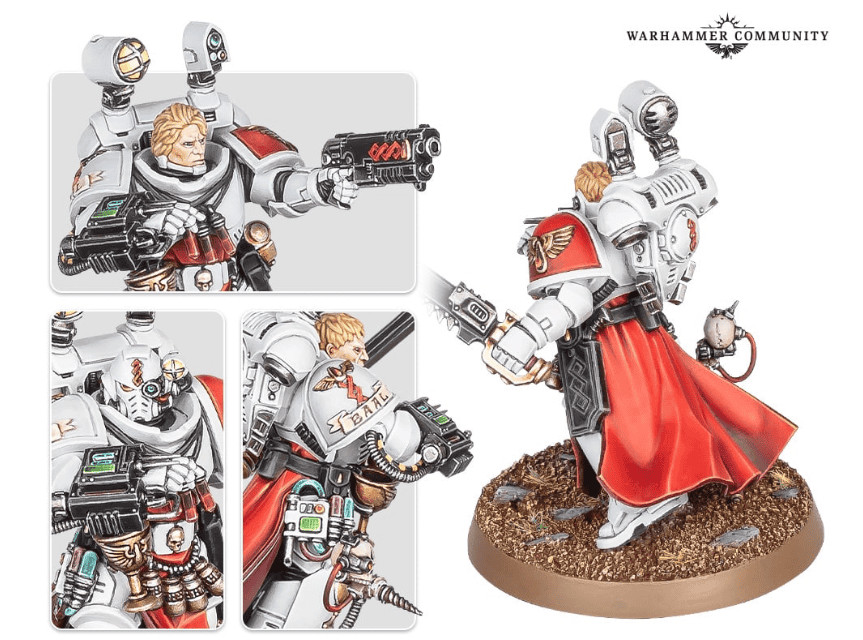
- Dante with Sanguinary Guard: Dante buffs the Guard, giving them that sweet +1 to hit and charge rolls, turning them into a precision wrecking crew.
- Astorath with Death Company: Astorath makes the Death Company hit harder and keeps them alive longer. Plus, his Mass of Doom ability brings Devastating Wounds to the table.
- Mephiston with Vanguard Veterans: Mephiston’s psychic powers can lock enemies in combat, allowing your Vets to swoop in and clean up. Pure synergy!
How to Play: Key Blood Angels Stratagems
Stratagems are your secret weapon—literally. The Blood Angels Codex offers a range of stratagems designed to enhance mobility, increase survivability, and make your already deadly units even more dangerous.
When to Use Advance-and-Charge Stratagems
The Blood Angels are all about closing the gap fast, and advance-and-charge stratagems are your best friend. Use these when you need to blitz across the board, catching your enemy off guard. Whether it’s Forlorn Fury for Death Company or Death from the Skies for Jump Pack units, timing these right can mean the difference between a glorious melee charge or a round of enemy fire hitting your face.
Enhancing Your Units with Blood Angels’ Unique Abilities
Don’t forget the Blood Angels’ unique abilities like The Red Thirst, which boosts your wound rolls in combat. Pairing this with stratagems that grant extra attacks or damage means your units can obliterate even the toughest enemies. Knowing when to stack these abilities will turn your army from dangerous to downright horrifying.
How to Paint Blood Angels
So, you’ve decided to embark on the noble quest of painting Blood Angels, the crimson-clad knights of the Warhammer 40K universe. Excellent choice! But before you dive in, let’s chat about how to make those miniatures look so good that even Sanguinius himself would give a nod of approval.
Priming: The Unsung Hero

The Red Dilemma

Details, Details, Details
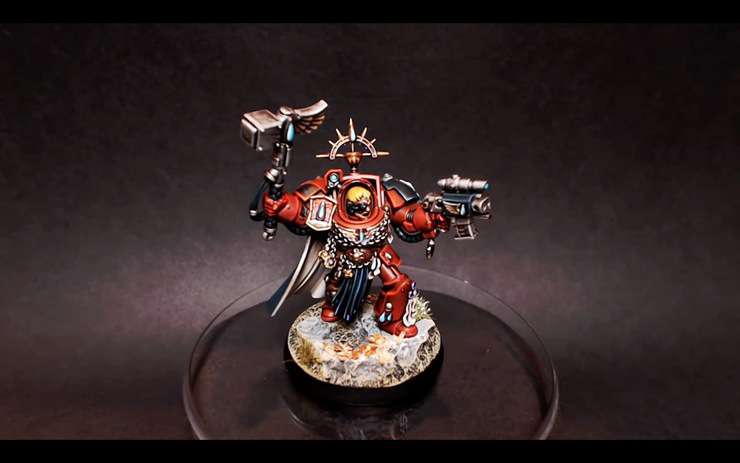
- Helmets: Depending on the squad, helmet colors can vary. For example, Assault Marines often sport yellow helmets, which adds a striking contrast to the red armor. To achieve this, start with a base coat of Averland Sunset, followed by a wash of Reikland Fleshshade, and highlight with Yriel Yellow.
- Weapons: Gun casings are typically black. A base coat of Abaddon Black, followed by edge highlights with Eshin Grey, will do the trick. For metallic parts, Leadbelcher with a Nuln Oil wash gives a realistic metal finish.
- Eyes: The lenses can be a focal point if done right. A base of Caliban Green, followed by a highlight of Warpstone Glow, and a tiny dot of Moot Green can give that glowing effect. Remember, the eyes are the windows to the soul—or in this case, the genetically enhanced super-soldier.
Basing: The Final Frontier
Don’t let your beautifully painted miniatures stand on boring bases. Consider a desert or urban rubble theme to contrast the red armor. Texture paints like Armageddon Dust or Astrogranite can add that extra oomph. A light dry brush of Ushabti Bone or Administratum Grey over the texture can bring out the details.
Latest Warhammer 40k Rules Updates For the Blood Angels Codex:
The latest updates for the Blood Angels 10th Edition rules will be released in what Games Workshop calls a Balance Dataslate, sometimes along with accompanying points changes as well. You can see all the latest Balance Dataslate updates here in our post, which breaks down the most recent changes.
How To Play Warhammer 40k Blood Angels: Points
You can find the latest points for playing this faction in 10th Edition Warhammer 40k here on our Munitorum Field Manual Points Updates Page.
Community Reactions to Blood Angels 10th Edition Codex
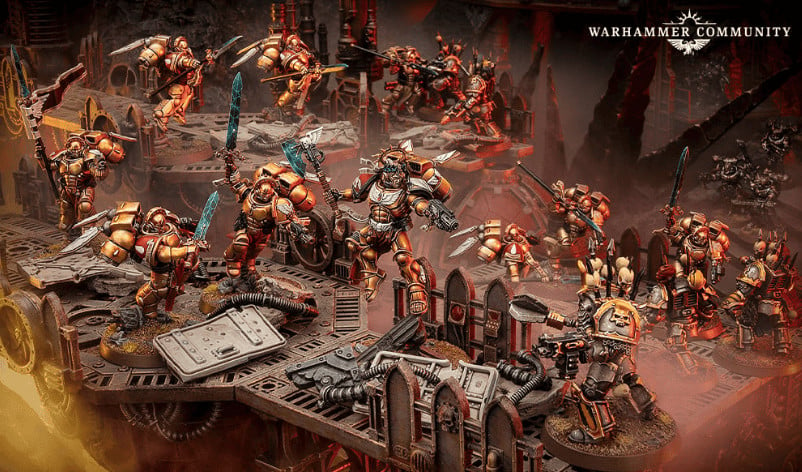
The new rules and unit updates have drawn mixed reactions. On one hand, Blood Angels fans are thrilled with the improved character models like Mephiston and Dante, as well as the thematic focus on close combat. However, the loss of old favorites like the Librarian Dreadnought has some players feeling like a piece of their army’s history is missing.
Points Adjustments and Their Impact on Play
Points changes are always a hot topic, and this codex is no different. Some units, like the Sanguinary Guard, have become more cost-effective, making them more attractive choices. On the other hand, Death Company Dreadnoughts now come with a steeper price tag, leading to debate about whether their new abilities justify the cost. The general consensus? We’ll probably see some tweaks in the next balance update.
Nostalgia for Old Units Like the Librarian Dreadnought
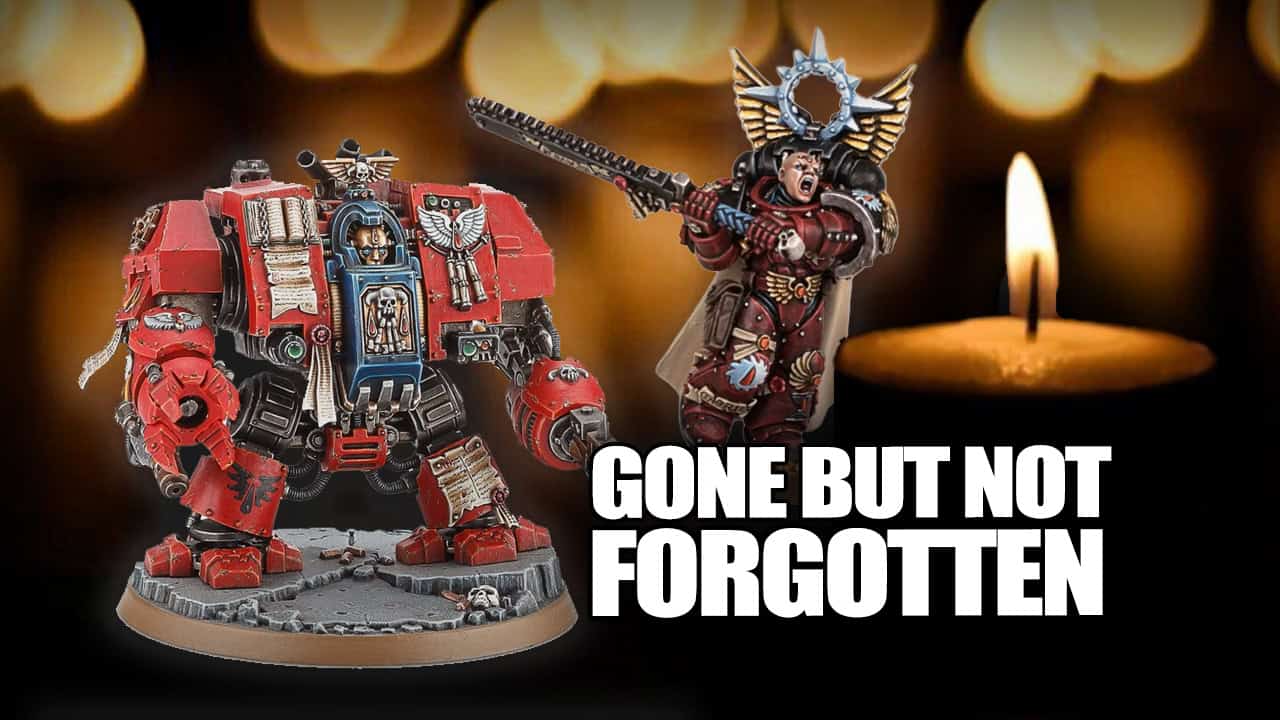
How the Competitive Meta is Shifting for Blood Angels
As the competitive scene adapts to the new codex, Blood Angels are poised to make some serious waves. With their enhanced mobility, devastating melee potential, and strong character buffs, they’re shaping up to be a force to be reckoned with.
Predictions for Blood Angels in Warhammer Tournaments
Expect to see Liberator Assault Group and Sanguinary Guard Detachments making a strong showing in tournaments. Their combination of mobility, tactical flexibility, and raw power makes them a great choice for competitive play. Watch out for Mephiston and his psychic shenanigans to dominate high-level games, especially with his ability to lock down key units.
Conclusion: Embracing the Red Thirst in Warhammer 40k
Winning with Blood Angels isn’t just about charging in and hoping for the best—it’s about knowing when to strike, where to position your forces, and how to keep your army fighting at full strength while your opponents scramble to keep up. The 10th Edition Codex has refined their aggressive melee playstyle, giving players new tools to make every charge count. Whether you’re fielding the precision of the Sanguinary Guard, the reckless fury of the Death Company, or the tactical mobility of the Liberator Assault Group, success comes down to maximizing speed, timing your attacks, and knowing when to commit to all-out carnage.
The Blood Angels continue to be one of the most unique and exhilarating factions in Warhammer 40k, balancing noble heroism with uncontrollable rage. Now that you’ve got the rundown on their new rules, detachments, and best strategies, it’s time to take to the battlefield and show the galaxy why Sanguinius’ legacy still reigns supreme. Have a favorite Blood Angels combo or tactic? Drop it in the comments—let’s talk war stories!
All the Latest Warhammer Rules & Model Rumors
What do you think about the new Warhammer 40k Blood Angels Codex rules and our 10th Edition review and guide on how to play them?
